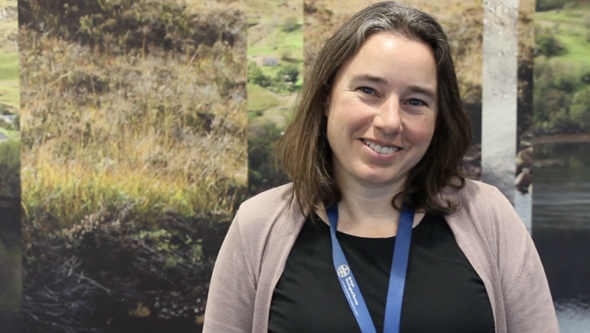Geologists vital for the green transition
The biggest hurdles for the green transition to take place are not actually to do with geology. According to Kathryn Goodenough, Principal Geologist at the British Geological Survey, there are plenty of sources for all the critical raw materials in the Earth’s crust.
– The challenge is that they have to be explored and mined in a way that follows best practice for the environment and for communities around. It takes a lot of time and money to develop mines in the best way possible, she says.

Dr. Kathryn Goodenough is in Gothenburg for the Nordic Geological Winter Meeting to talk about critical raw materials for the energy transition. She is one of the keynote speakers at the research conference, with an area of expertise is the geology of critical raw materials, particularly lithium.
You will speak about critical raw materials for the energy transition. What is the biggest hurdle ahead in order to make the shift to renewable energy sources?
– The challenge is not just the mines. We also have to construct the processing plants that convert the raw ore into the materials needed by the manufacturing industry. Doing this is absolutely essential for the green transition, but politics, economics, and issues of public perception can all create barriers.
– Sometimes, these barriers mean that it is just too difficult to develop mines and processing plants, especially in Europe, and so we end up with raw materials sourced from mines in countries that are perhaps not so well managed or regulated.
How do you see the role of Geology in ensuring security of supply for a greener future?
– Geologists are absolutely vital for the green transition. We need to collect the data, and understand the geological processes, that will allow us to explore for critical minerals. But we also need engineering geologists to help build mines and other infrastructure; we need energy geologists to identify sources of clean energy (such as geothermal) and to understand how we can store energy and/or waste in the subsurface; and we need environmental geologists to help with site remediation and prevent pollution.
If we look 10 years ahead, where are we in terms of the green transition?
– Huge progress is being made in all aspects of the green transition, but it is vital that we have a pipeline of geologists, other scientists and engineers to ensure that we have the critical raw materials, the energy sources, and the infrastructure that we need; and that it is all managed in the way that is best for the environment and for communities.
BY: JENNY MEYERR
Nordic Geological Winter Meeting
The Nordic Geological Winter Meeting takes place in Gothenburg, Svenska Mässan, on January 10-12. This year's edition is the 36th in the order with more than 500 participants from mainly the Nordic countries but also other parts of the world. The conference is organized by the Geological Society of Sweden in collaboration with, among others, the University of Gothenburg, Department of Earth Sciences. Academia, governmental agencies, small business and industry participate. This year's theme is "Geology for society".